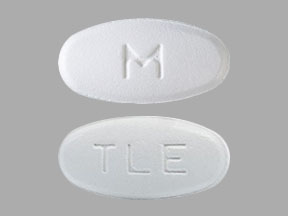Symfi Lo and Alcohol/Food Interactions
There are 4 alcohol/food/lifestyle interactions with Symfi Lo (efavirenz / lamivudine / tenofovir).
Efavirenz Food
Moderate Food Interaction
Consumer information for this interaction is not currently available.
ADJUST DOSING INTERVAL: Administration with food increases the plasma concentrations of efavirenz and may increase the frequency of adverse reactions. According to the product labeling, administration of efavirenz capsules (600 mg single dose) with a high-fat/high-caloric meal (894 kcal, 54 g fat, 54% calories from fat) or a reduced-fat/normal-caloric meal (440 kcal, 2 g fat, 4% calories from fat) was associated with mean increases of 39% and 51% in efavirenz peak plasma concentration (Cmax) and 22% and 17% in systemic exposure (AUC), respectively, compared to administration under fasted conditions. For efavirenz tablets, administration of a single 600 mg dose with a high-fat/high-caloric meal (approximately 1000 kcal, 500-600 kcal from fat) resulted in a 79% increase in mean Cmax and a 28% increase in mean AUC of efavirenz relative to administration under fasted conditions.
MANAGEMENT: Efavirenz should be taken on an empty stomach, preferably at bedtime. Dosing at bedtime may improve the tolerability of nervous system symptoms such as dizziness, insomnia, impaired concentration, somnolence, abnormal dreams and hallucinations, although they often resolve on their own after the first 2 to 4 weeks of therapy . Patients should be advised of the potential for additive central nervous system effects when efavirenz is used concomitantly with alcohol or psychoactive drugs, and to avoid driving or operating hazardous machinery until they know how the medication affects them.
References
- (2001) "Product Information. Sustiva (efavirenz)." DuPont Pharmaceuticals
Tenofovir Food
Minor Food Interaction
Information for this minor interaction is available on the professional version.
Lamivudine High Cholesterol (Hyperlipoproteinemia, Hypertriglyceridemia, Sitosterolemia)
Major Potential Hazard, Moderate plausibility
NRTIs - pancreatitis
The nucleoside reverse transcriptase inhibitors, didanosine, stavudine, and lamivudine, may cause pancreatitis. The incidence is generally low but is up to 7% with didanosine, and up to 18% in pediatric patients given lamivudine. Patients with a history of or known risk factors for pancreatitis (such as alcohol abuse or hypertriglyceridemia) should be monitored closely during therapy with these agents. Therapy should be discontinued at the first signs/symptoms suggestive of pancreatitis (e.g., nausea, vomiting, abdominal pain, hyperamylasemia with dysglycemia, rising triglycerides, decreasing serum calcium), and preferably permanently discontinued if clinical pancreatitis develops.
References
- (2019) "Product Information. Epivir (lamiVUDine)." ViiV Healthcare, SUPPL-39
- (2018) "Product Information. Videx (didanosine)." Bristol-Myers Squibb, SUPPL-54
- (2018) "Product Information. Zerit (stavudine)." Bristol-Myers Squibb, SUPPL-41
Efavirenz High Cholesterol (Hyperlipoproteinemia, Hypertriglyceridemia, Sitosterolemia)
Moderate Potential Hazard, Moderate plausibility
efavirenz - cholesterol
Increases in total cholesterol and triglycerides have resulted during treatment with efavirenz. Lipid levels monitoring should be performed before starting treatment and at periodic intervals during therapy.
References
- (2001) "Product Information. Sustiva (efavirenz)." DuPont Pharmaceuticals
Symfi Lo drug interactions
There are 841 drug interactions with Symfi Lo (efavirenz / lamivudine / tenofovir).
Symfi Lo disease interactions
There are 12 disease interactions with Symfi Lo (efavirenz / lamivudine / tenofovir) which include:
- hepatitis B
- hepatotoxicity
- pancreatitis
- cholesterol
- liver disease
- mental symptoms
- QT prolongation
- seizures
- renal dysfunction
- bone toxicity
- liver disease
- renal dysfunction
More about Symfi Lo (efavirenz / lamivudine / tenofovir)
- Symfi Lo consumer information
- Check interactions
- Compare alternatives
- Pricing & coupons
- Drug images
- Side effects
- Dosage information
- During pregnancy
- Generic availability
- FDA approval history
- Drug class: antiviral combinations
- En español
Related treatment guides
Drug Interaction Classification
| Highly clinically significant. Avoid combinations; the risk of the interaction outweighs the benefit. | |
| Moderately clinically significant. Usually avoid combinations; use it only under special circumstances. | |
| Minimally clinically significant. Minimize risk; assess risk and consider an alternative drug, take steps to circumvent the interaction risk and/or institute a monitoring plan. | |
| No interaction information available. |
Further information
Always consult your healthcare provider to ensure the information displayed on this page applies to your personal circumstances.


